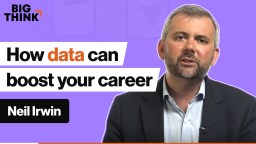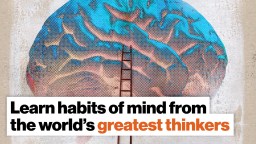Letters from an Astrophysicist
NEIL DEGRASSE TYSON: I think no one would give up the internet today, in spite of the problems that it has presented us. It started out oh, this is kind of fun. We can watch cat videos all day or that most of the information that came across was instructive or humorous or enlightening. It didn't start turning mean until a few years in, maybe five or ten years ago. Certainly definitely beginning at least five years ago where people see it as a way to tribalize us. You don't agree with my opinion, you're wrong, and I'm going to fight you for it. I didn't grow up in that environment. I don't think anyone else did either. It was you have a different opinion? Cool. Tell me about it. Let's go have a beer, we'll talk about it. Not I will argue with you until you are dead unless you agree with my opinion. See something's not right there. And everybody's got an opinion and so there it goes. The internet is this clearinghouse of opinions but nothing gets cleared. Opinions ossify, making it a rather rigid place to navigate.
We have access to more information than ever before. That's a good thing. It gives good information some hope. But are we trained? Do we have the tandem training to know whether the information you just were exposed to is legitimate, is it real, is it false, is it true? You can't just hand people new kinds of information without expecting them to be confused by it without some training that would have occurred before it. Maybe all school curricula should be how to determine reliable sources and how not. How to know when it's not reliable. Is that in the curriculum? Not last I looked. Maybe in journalism school but not in K-12. Not in college, I haven't seen much of it. So yeah, we need practice. Better yet we need science literacy. Science literacy empowers you to know when someone else is full of shit. And it's simple. What is science literacy? It's understanding how things work. How physiology works. How chemistry works. How physics works. Engineering.
All of this. You don't have to be an engineer or be a scientist. Just understand how certain basic systems work so that when someone is ready to sell you homeopathic medicine where they've diluted the active ingredients from the water so that there's no molecules left in the water and they sell that to you and they're telling you that the water remembers the medicine that used to be in it. And you're going to hand money to someone for that? I'm not going to complain to you. I'm going to say let's go together and look at how you were trained. Let's look at the syllabus that you were handed when you were in school. Here's where you're missing a few things. Here's where you're missing how to ask questions. Science is not a satchel of knowledge. It's a way of querying nature and a way of querying other people who are making claims about nature. That's where the empowerment comes from. It's an inoculation against charlatans. That's how you're going to know the difference going forward.






